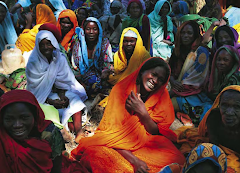
Curious to understand where UNHCR began all of its work i looked into the 1951 Geneva Refugee convention which set the stage for global refugee policy & legal rights. After the General Assembly called forth for the United Nations Conference to meet in Geneva to draft a convention regulating the legal status of refugees, provisions of the convention
 concerning the definition of the term refugee and the principle of non-refoulment were established: i.e that no Contracting state shall expel or return "refouler" a refugee, against his/her will in any manner into a territory where he/she fears persecution.
concerning the definition of the term refugee and the principle of non-refoulment were established: i.e that no Contracting state shall expel or return "refouler" a refugee, against his/her will in any manner into a territory where he/she fears persecution.
- locally integrate refugees
- voluntary return to homeland
- resettlement in 'third' countries (if other two not possible)
Article 1
definition of the term “refugee”
A. For the purposes of the present Convention, the term “refugee” shall
apply to any person who:
(1) Has been considered a refugee under the Arrangements of 12 May 1926
and 30 June 1928 or under the Conventions of 28 October 1933 and 10
February 1938, the Protocol of 14 September 1939 or the Constitution of
the International Refugee Organization;
Decisions of non-eligibility taken by the International Refugee Organ-
ization during the period of its activities shall not prevent the status
of refugee being accorded to persons who fulfil the conditions of para-
graph 2 of this section;
(2) As a result of events occurring before 1 January 1951 and owing to well-
founded fear of being persecuted for reasons of race, religion, national-
ity, membership of a particular social group or political opinion, is out-
side the country of his nationality and is unable or, owing to such fear,
is unwilling to avail himself of the protection of that country; or who,
not having a nationality and being outside the country of his former
habitual residence as a result of such events, is unable or, owing to such
fear, is unwilling to return to it.
In the case of a person who has more than one nationality, the term “the
country of his nationality” shall mean each of the countries of which he
is a national, and a person shall not be deemed to be lacking the protec-
tion of the country of his nationality if, without any valid reason based
on well-founded fear, he has not availed himself of the protection of one
of the countries of which he is a national.





No comments:
Post a Comment